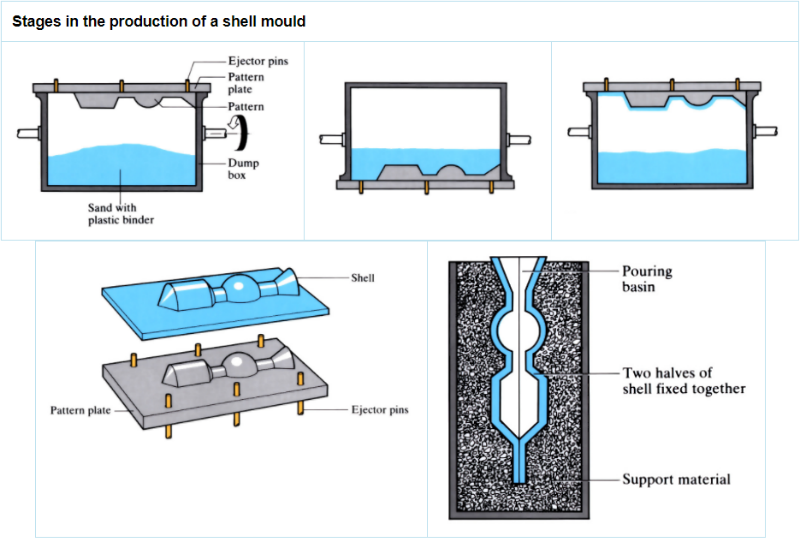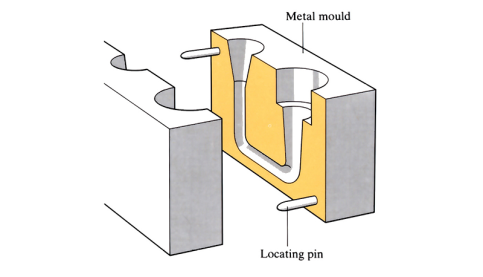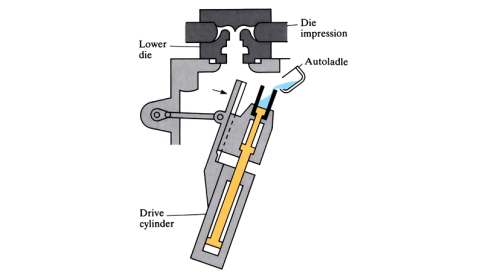
Manufacture:
- Phenol or urea formaldehydes (5%) are added to fine silica sand as bonding agents. No clay is added.
- Each half of a shell mould is made on a pattern plate. This has to be made of metal, usually of steel, because of the high temperature of moulding.
- The plate is heated to 200 - 250˚C, and is then sprayed or brushed with silicon oil, to facilitate the subsequent stripping of the shell from the pattern.
- The pattern plate is then placed on top of the dump box containing the sand-resin mixture.
- The dump box is inverted so that the pattern becomes covered by sand-resin mixture.
- The resin melts, and in about 30 s the pattern becomes coated with a “shell” of resin-bonded sand. The shell is sometimes quite hard, due to the thermosettingproperties of the resin.
- The dump box is turned back to its original position, so that the surplus of sand and resin falls back into the bottom of the dump box.
- The pattern plate is then removed, and with the shell still adhering to it, is transferred to an oven where the shell is hardened further by curing it for about 2 min at 315˚C. The shell is then stripped from the pattern plate by means of ejector pins built into the plate. Thickness is 6 - 9 mm.
- Two halves of the mould are then joined together by adhesives or bolts.
- Medium productivity (approximately 30 - 220 moulds per hour).
- Tool costs are reasonably high.
Materials:
- All materials that can normally be cast successfully.
Design:
- Higher degree of accuracy than with sand casting. Limits of ±0.25 mm can be achieved on small castings up to 100 mm in size.
- Cores should generally be avoided wherever possible.
- Only 1˚ of taper is required compared with 2 - 3˚ for sand castings. Faces up to 18 mm deep can be produced with virtually no taper.
- Use of fine grained sands produces good surface finishes.
- A shell moulding, with reduced machining and finishing, should be cheaper than an equivalent sand casting.
See Also: CLA-Hitchiner process, Investment casting and Full mould casting.
This article is a part of Manupedia, a collection of information about some of the processes used to convert materials into useful objects.


Rate and Review
Rate this article
Review this article
Log into OpenLearn to leave reviews and join in the conversation.
Article reviews